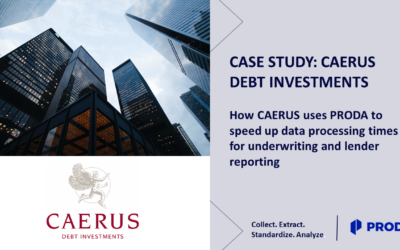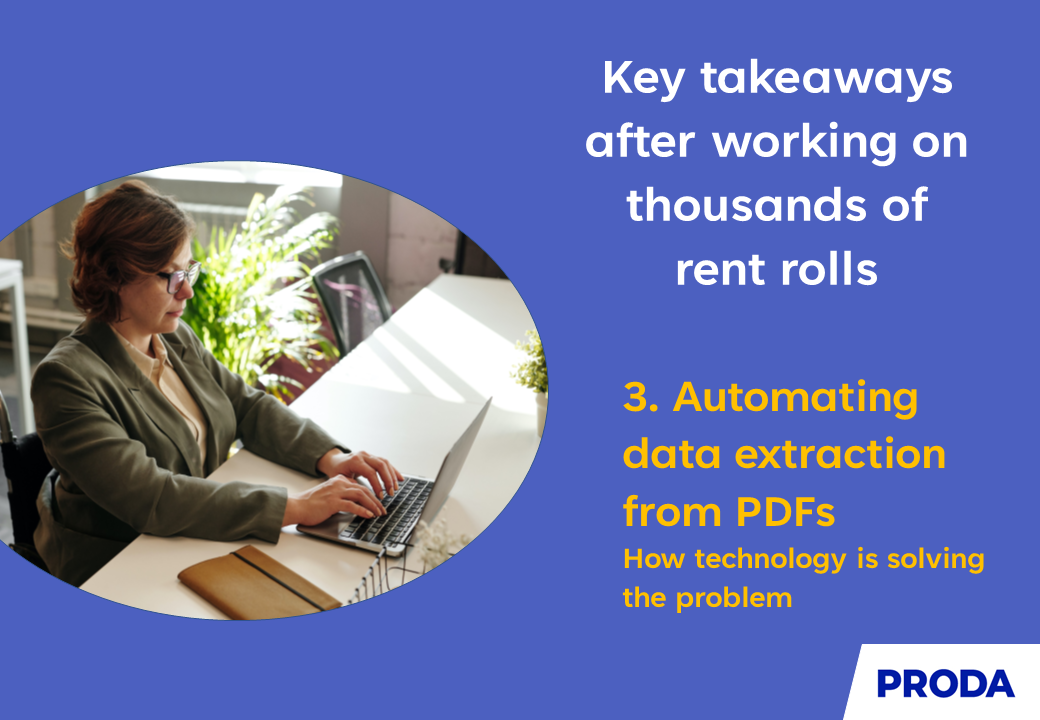The commercial real estate industry is worth $4.4 trillion. Investing in and managing rental property involves tracking important information like leases, rents and operating expenses. A rent roll is an essential tool that helps investors track these details efficiently – but it isn’t used solely by professionals in the world of real estate.
In this blog post, we’ll be exploring what a rent roll is, who uses it and when it comes into play during the different stages of a commercial lease.
What is a rent roll?
It’s a snapshot of the value of rental properties. It lists tenant details, lease terms, rent amounts, property details, annual increases and other criteria critical for tracking rental income and occupancy.
A rent roll records monthly rental income from real estate assets. It can be created for any real estate, such as single-family homes, multifamily structures, office buildings, shopping malls and land leased for agricultural use.
A commercial rent roll is like a menu in a restaurant. Just as a menu lists all the dishes available to order, a rent roll lists all the units available for rent in a commercial property, with the lease terms, rental rates and other relevant details (the ingredients used to describe a dish, if you like). Like a customer can choose from the menu which dish they want to order, a potential tenant can review the document to select a unit that meets their needs and budget.
A restaurant will update its menu regularly to reflect changes in pricing, availability and seasonal ingredients. Similarly, a property owner, asset manager or investment manager will update the rent roll regularly to reflect changes in lease agreements, rental rates and tenant occupancy.
When there’s a portfolio of properties, they become increasingly important for working out whether maximum value is being derived from them.
What information does it typically include?
A well-organized and detailed one is like a main storage place for important information that helps manage properties, analyze finances and make decisions. It needs to be updated regularly to make sure it’s accurate and gives a complete picture of how much money is being earned from renting out a commercial property and how many units are occupied.
A good rent roll for commercial real estate should include the following key information.
1. Tenant information
- Tenant name or company
- Contact information (address, phone, email)
- Tenant type (e.g. retail, office, industrial)
- Lease start date
- Lease end date
- Lease term (e.g. number of years, months)
2. Rental terms
- Monthly or annual base rent amount
- Additional rent components (e.g. common area maintenance charges, utilities, taxes, insurance)
- Rent escalations (if applicable)
- Security deposit amount
- Rent payment frequency (e.g. monthly, quarterly)
- Any rent abatement or concessions
3. Lease details to keep occupancy levels high and avoid potential income gaps
- Lease type (e.g. gross lease, net lease, modified gross lease)
- Square footage or rentable area occupied by the tenant
- Description of leased premises or specific unit
- Any renewal or termination options
- Any rights of first refusal or expansion options
- Any tenant improvement allowances or obligations
4. Financial information to evaluate property income and monitor cash flow
- Current rent payment status (paid, outstanding, late)
- Lease expiration notices or upcoming renewals
- Percentage of total property occupied by each tenant
- Percentage of total rental income contributed by each tenant
- Any rent increases or step-ups during the lease term
- Occupancy rates (vacant or occupied) to determine demand and make plans to attract new ones
5. Additional details
- Guarantor information (if applicable)
- Notes or comments (e.g. special provisions, restrictions)
- Any lease-related documents attached (e.g. lease agreements, amendments)
Who uses it?
- Owners and managers: typically, it’s used by property owners, asset managers, real estate investors and property managers to track their rental income, lease break or extension options and occupancy rates.
- Banks, lenders and other financial institutions: they use them to evaluate the value, income potential and return on investment of a rental property. Future cash flow predictions can be made based on historical financial performance and help to determine the financial stability of a rental property. Insurance companies might also use them to calculate deductibles and premiums.
- Real estate agents and brokers: they might also use them as a marketing tool to attract buyers and sellers and to help them make informed decisions about investment properties based on predicted revenue. Rent rolls also show current tenants, which helps to profile a property based on the type of occupants.
- Government authorities: tax offices, for instance, will appraise rental incomes listed on them to calculate relevant taxes.
What is a commercial rent roll used for?
As we’ve noted above, it keeps track of important information about rental properties. Here are the top four reasons why it’s essential.
- Tracking rental income: it’s like a financial report card for property owners. It shows how much rental income a property has generated over a specific period, including any rental discounts or increases such as step rents, rent value and property expenses. This helps property owners, asset managers and investors to manage their cash flow and make informed financial decisions.
- Analyzing occupancy rates: it provides an accurate measure of occupancy rates. It helps property managers adjust pricing strategies according to demand.
- Identifying lease expirations: it highlights lease expiry dates, making it easier for property managers to plan for tenant turnovers, re-leasing and maintenance.
- Evaluating property value: lenders and investors use it to determine the value and income potential of a rental property. This information is crucial for negotiations, making investment decisions and securing financing and insurance.
When is it used?
Acquisition and due diligence
During the process of acquiring a commercial property, potential buyers and investors use it as part of their due diligence. It helps them evaluate the property’s financial performance – usually by property type, square metres/feet, location and condition – assess the stability of rental income and estimate the property’s value and income potential.
Financing and loan applications
Lenders need it when considering financing options for commercial properties. It provides crucial information about the property’s rental income, occupancy rates and lease terms. Lenders use this information to evaluate the property’s cash flow, assess the risk profile and determine the loan amount and terms.
Investment analysis and decision-making
Investors and real estate professionals use it to analyze the financial viability and potential return on investment of a commercial property. By assessing rental income, occupancy rates and lease terms, investors can evaluate the property’s income potential, estimate cash flows and make informed investment decisions.
Property management
It helps property owners and managers to track rental payments, monitor occupancy rates, manage lease expirations, and assess the financial performance of the property. And it provides critical data for pricing, lease negotiations, tenant retention and overall property management strategies.
Financial reporting and investor communication
It’s used for financial reporting to stakeholders and investors. Property owners provide accurate and up-to-date rent roll information to communicate the property’s financial performance, rental income and occupancy rates to investors, partners and other stakeholders.
Lease renewals and negotiations
It’s crucial during lease renewals and negotiations with tenants. Property owners and managers refer to them to assess lease expiration dates, rental rates and occupancy status. It helps in evaluating tenant retention strategies, negotiating lease terms and planning for any necessary adjustments to rental rates.
Market analysis and valuation
It provides data for market analysis and property valuation. Real estate professionals use its information to compare rental rates, assess market competitiveness and estimate the value of a commercial property based on income capitalisation or other valuation methods.
CRE rent rolls
To sum up, they’re a valuable document that can help commercial real estate owners, investors and analysts make informed business decisions. They contain information about tenants, rents and the assets that are part of a rental-producing portfolio.
Rent rolls provide a snapshot of a rental property’s income stream, its vacancy rates and tenant characteristics. They can become valuable tools in determining the financial performance of a building or bundle of buildings over time.
While most commonly used for real estate investments, they’re also helpful to lenders when considering mortgage loans against an asset class, like shopping centres or apartment complexes. Knowing how to interpret data from one can help asset managers get the most out of their investment portfolios while preparing for market fluctuations.
Understanding what to look for in a rent roll can also help identify potential opportunities and threats early on. Whether you’re looking to increase your returns from real estate investments, build better portfolios or better manage your current portfolio, knowing how to read and use them effectively is invaluable.




